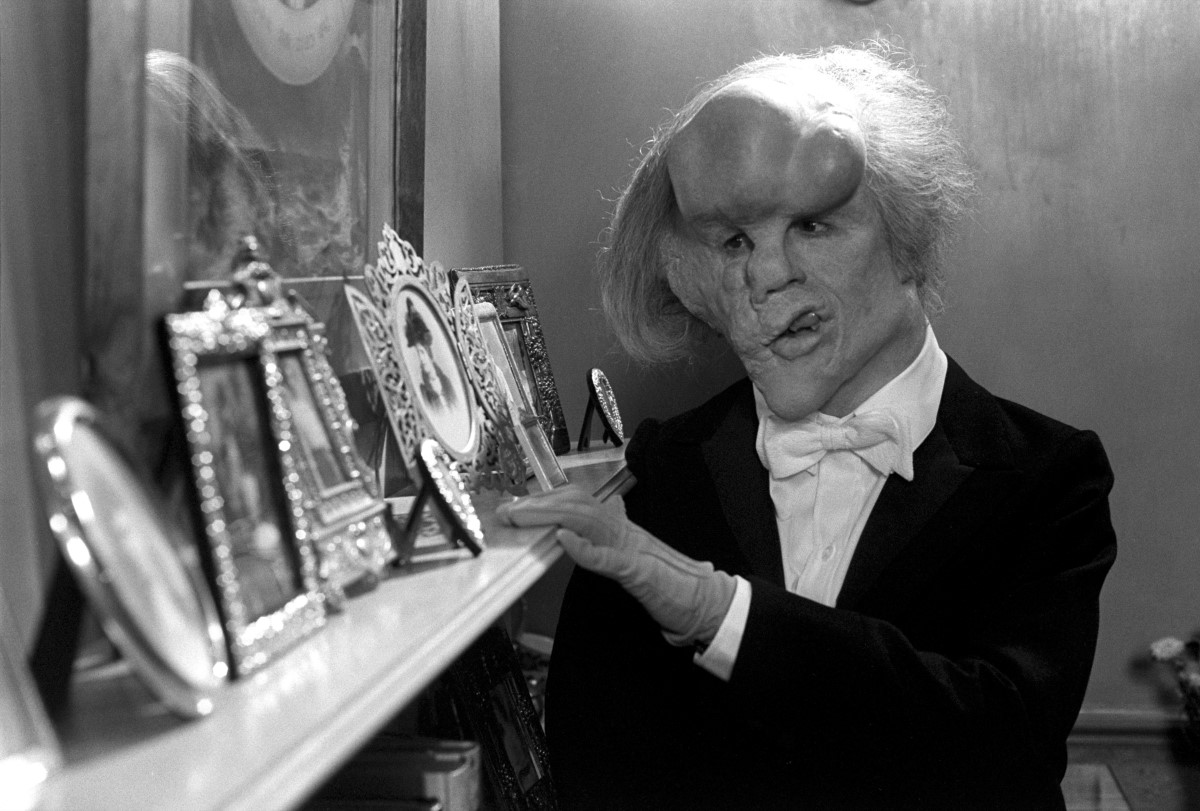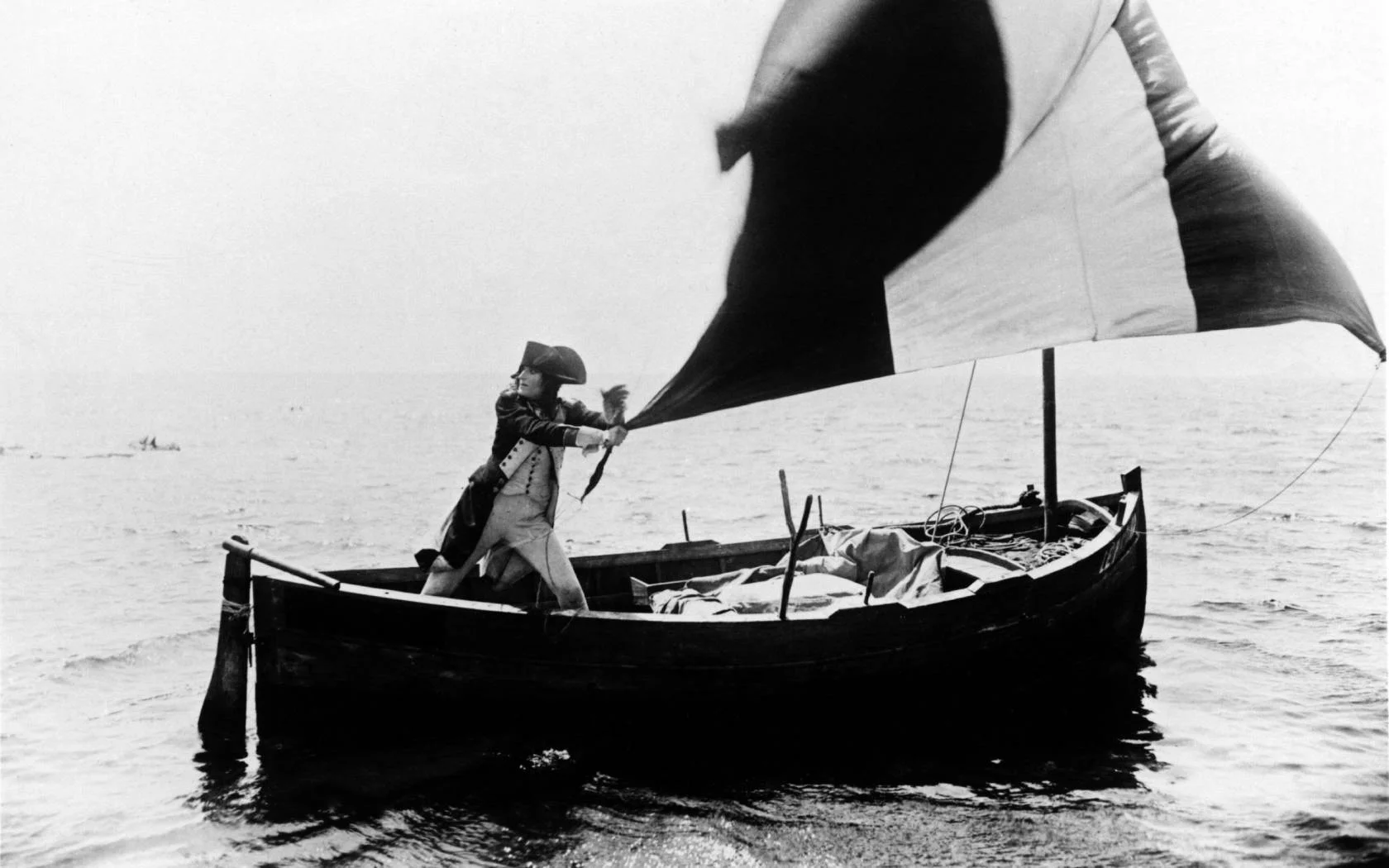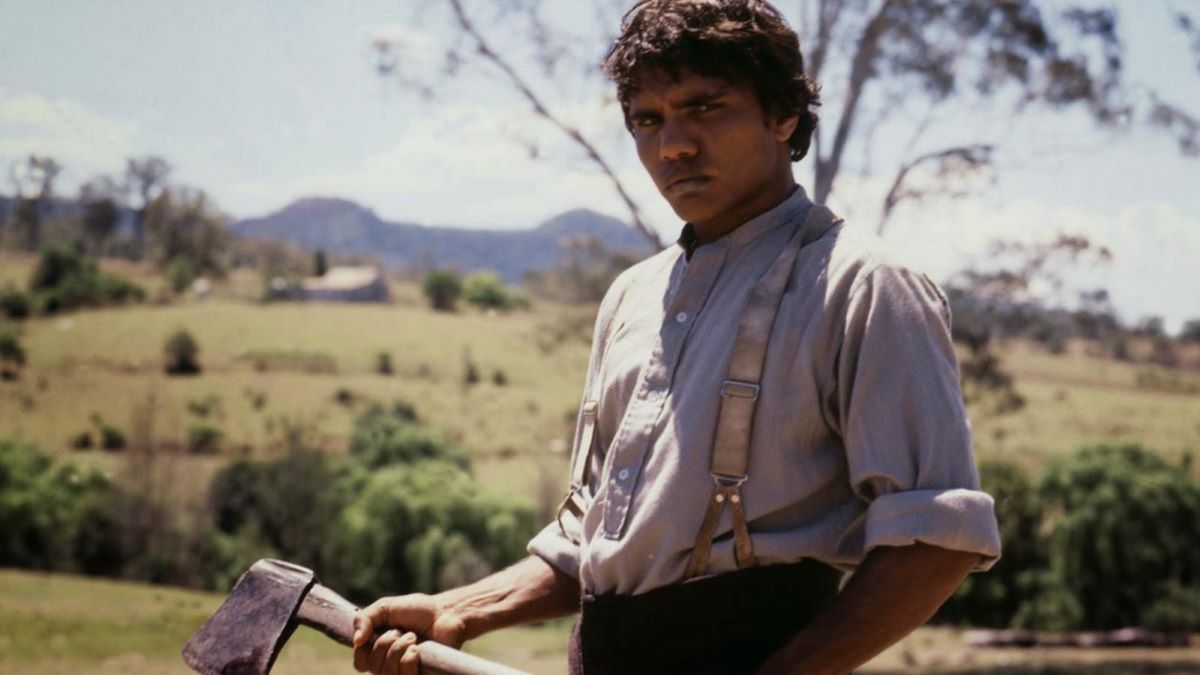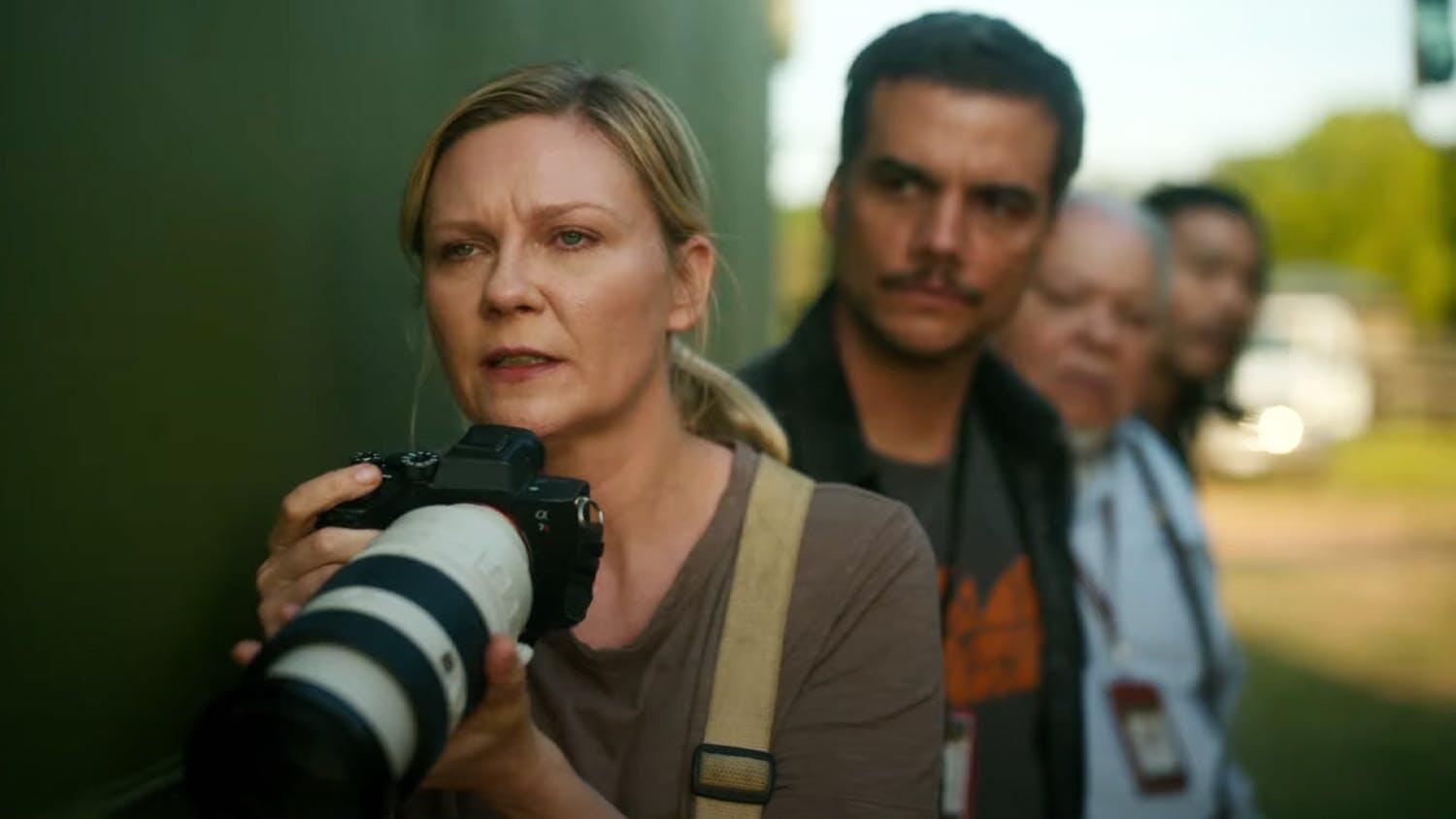by Pauline Kael
The Elephant Man is a very pleasurable surprise. Though I had seen Eraserhead, which is the only other feature directed by David Lynch, and had thought him a true original, I wasn’t prepared for the strength he would bring out of understatement. It might be expected that the material—the life of John Merrick, the grievously eminent Victorian who is sometimes said to have been the ugliest man who ever lived—would push Lynch into the kind of morbid masochism that was displayed in the various versions of The Hunchback of Notre Dame and The Phantom of the Opera. But this young director (he’s thirty-four) has extraordinary taste; it’s not the kind of taste that enervates artists—it’s closer to grace. The movie shows us what the monster feels about himself and what his view of the world is and what he sees when he looks out of the single rectangular slit in his hood (which suggests an elephant’s eye). He must see everything framed, as on a screen, and the movie gives us this sense of framed imagery—of action marked off, with curtains drawn over the surrounding material. (The stitching around the slit gives it depth, and at one point, when the hood is hanging on the wall, the camera moves right into the dark opening.) You may find yourself so absorbed that your time sense changes and you begin to examine the images with something of the same wonder that John Merrick (John Hurt) shows when he looks at the spire of St. Philip, Stepney, from his window at the London Hospital, where he finds refuge.
The Elephant Man has the power and some of the dream logic of a silent film, yet there are also wrenching, pulsating sounds—the hissing steam and the pounding of the start of the industrial age. It’s Dickensian London, with perhaps a glimpse of the processes that gave rise to Cubism. Coming from an art-school background, Lynch has rediscovered what the European avant-garde film artists of the twenties and early thirties, many of whom also came from a painting and design background, were up to, and he has combined this with an experimental approach to sound. In Merrick’s fantasy life, his beautiful young mother is trampled by elephants when she is carrying him in her womb, and the sounds of those great beasts as they attack her in his dreams are the hellish sounds of industrial London, whose machines will produce their own monstrous growths. The Elephant Man isn’t as daringly irrational as Eraserhead, which pulls you inside grubby, wormy states of anxiety, but it pulls you into a serene, contemplative amazement. Lynch holds you in scenes with almost no action: Merrick may be alone on the screen preening, or fondling the brushes and buffers in his gentleman’s dressing case, or just laying them out in an orderly pattern and waltzing around them, like a swell, and you feel fixated, in a trance.
When Frederick Treves (Anthony Hopkins), the doctor who is to become Merrick’s friend, first tracks him down in the illegal, hidden sideshow where he’s being exhibited as the Elephant Man, Treves goes through what seem to be endless slum passageways and alleys into an abyss—the darkness where the monster huddles. Finally, he sees the pathetic deformed creature, but we don’t. We see only Treves’ reaction, and his tears falling. The grace in Lynch’s work comes from care and thought: this is a film about the exhibition and exploitation of a freak, and he must have been determined not to be an exploiter himself. The monster is covered or shadowed from us in the early sequences and we see only parts of him, a little at a time. Lynch builds up our interest in seeing more in a way that seems very natural. When we’re ready to see him clearly, we do. By then, we have become so sympathetic that there’s no disgust about seeing his full deformity. John Hurt has had the screen long enough to make us respond to his wheezing, groaning sounds and his terrified movements, so we don’t see merely the deformations, we see the helpless person locked in the repulsive flesh. Even before Merrick begins to speak to Treves and to recite poetry and to reveal his romantic sensibility, we have become his protectors. He’s a large lumplike mass at first, but as we get to know him, and respond to his helplessness, he begins to seem very slight—almost doll-like. There’s nothing frightening about him, and he’s not repellent, either. His misshapen body and the knobby protuberances on his forehead suggest a work of an—an Archipenko or one of Picasso’s bulging distortions.
The only horror is in what we experience on his behalf. When a young nurse sees him and screams, it’s his recoil we respond to. There is a remarkable sequence after Merrick has been kidnapped from the hospital by his London exploiter and taken to be exhibited again, this time on the Continent. Too sick to stand and in despair, Merrick doesn’t gratify the ticket buyers, and he is beaten so brutally that the other fairground freaks decide to free him. The giant strong man breaks the lock of the cage next to the baboons where Merrick has been put and lifts him out in his arms, and there is a dreamlike procession of the freaks in the woods along a riverbank as they help him to escape. They buy him his passage back to England, and a small group of them take him to the ship. (We’re apprehensive then, because he’s going to be alone.) He arrives in London by train, and as he makes his way slowly and painfully through the station his cloaked, hooded figure attracts the attention of a puzzled boy, who demands to know why he’s wrapped up as he is and pelts him with a peashooter. Other kids follow him and taunt him; with only the eye slit on one side, when he clumsily tries to move faster to get away he inadvertently knocks down a little girl. People begin to chase him, and he rushes down a flight of stairs; on the landing, someone tears off his hood and he runs down more stairs and staggers into a urinal. A mob comes in after him, backing him against a wall; he moans that he is not an animal and collapses. This whole sequence is saved from being a cheap ecstasy of masochism by the fairy-tale design of the shots and the lighting. Using black-and-white Panavision, the veteran cinematographer Freddie Francis does lighting here that recalls his expressive work in Sons and Lovers and Room at the Top and Saturday Night and Sunday Morning. The smoke that softens everything is like J. M. W. Turner clouds, but carrying poison. With the help of the production designer, Stuart Craig, Lynch and Francis use the grays to set a tone of emotional reserve yet make the whites and the sooty blacks, which bleed out of their contour lines, seem very passionate (the way they are in the Londoner Bill Brandt’s photographs). The imagery is never naturalistic, and Lynch never pulls out all the stops.
Every time the director does something risky and new or reinterprets something very old, you know you’re watching real moviemaking. Though the sound isn’t nearly as inventive as it was in Eraserhead, whenever it’s hyperbolic, like the noise of the big gongs that wake Merrick on his first night at the hospital, it has a disturbing excitement. And Samuel Barber’s “Adagio for Strings” on the track has an elegiac lyricism—stately, but mellow, too. Lynch is least successful with the conventional melodramatic scenes. When the night porter at the hospital invades Merrick’s room with gawkers, and two whores are shoved onto his bed, we want to climb the wall along with Merrick, and not just out of empathy: the staging is crude. And almost all the scenes of the drunken villain, Bytes (Freddie Jones), the exploiter and kidnapper, seem long, probably because you can read his standard evil piggy expressions a mile away. The scenes of Anne Bancroft as Mrs. Kendal, the actress whose visits to Merrick turn him into a celebrity (which leads to his being taken up by London society), feel obligatory. The first time she’s close to Merrick, Mrs. Kendal shows a flicker of disgust that she covers with her actressy poise—that part is good. But after that we need to read her feelings in her eyes, and all we register is her smiley, warm mouth; she’s gracious in a great-lady way that doesn’t provide any clue to why she becomes involved. The dialogue in the script, by Christopher DeVore and Eric Bergren, with the later collaboration of Lynch, is no more than serviceable, and it’s less than that in Bancroft’s role; she’s used like a guest star, and though she’s more toned down than in other recent appearances, she seems to have dropped in from another era. Hannah Gordon, who plays Mrs. Treves, has the clearer, better pan: when Treves brings Merrick to tea and presents him to his wife, Merrick is so overwhelmed at meeting a beautiful woman that he snuffles and weeps. And she, of course, weeps, too. (There’s no sun in this tale of a terrible enchantment, and a tear shed for Merrick is a jewel.)
John Gielgud is in strapping form as the head of the hospital, and Wendy Hiller, as the chief nurse, matches him in vinegary elegance, syllable for syllable, pause for pause. John Hun and Anthony Hopkins—both specialists in masochism—might have leaked so much emotion that the film would slip its sprockets. But Hopkins comes through with an unexpectedly crisp, highly varied performance—the kind you respect an actor for. He lets Hurt (was ever actor better named?) have a monopoly on our sympathy, and Hurt, using his twisted lips and his eyes, but mostly his voice and his posture and movements, makes of Merrick an astonishingly sweet-souled gentleman of his era. If he were not encased in loathsome flesh, we could never believe in such delicate, saintly humility. But the film makes us understand that in a time when ugliness was thought to come from within, Merrick had to become a dandy of the soul in order to feel human. Once he’s out of his cloak and into a suit, he has a soft, sidling walk, askew but airy. He’s only in his twenties (he died at twenty-seven), and his wish to be good is childlike and a little cracked, but his kindness seems to come from a mystic simplicity. There’s no irony in the film when he becomes a society figure—an oddity and a pet to be pampered. We see his sheer delight in being accepted among people with nice manners; his fawning gratitude is from the heart. He isn’t concerned with Treves’ problems of conscience about whether he, too, is exploiting Merrick’s condition. Merrick knows that Treves has brought him from agony to peace. The director doesn’t stray from the Victorian framework he constructs; nothing is interpreted (not even the recurrent mother-being-raped-by-elephants dream), and so nothing is sentimentalized in a modern manner.
This is not the usual movie—in which the story supports the images and holds everything together. Lynch’s visual scheme is so imaginative that it transcends the by now well-known story, and scene by scene you don’t know what to expect. You’re seeing something new—subconscious material stirring within the format of a conventional narrative. There is perhaps nothing as eerily, baldly erotic as that moment in Eraserhead when two lovers deliquesce into their bed—disappearing in the fluid, with only the woman’s hair left floating on top. But there is something indefinably erotic going on here; it’s submerged in the film’s rhythm and in the director’s whole way of seeing. And wherever you look there are inexplicably satisfying images: a little barrel-chested mutt bulldog waddles across a London street with its tail stretched straight out, like a swagger stick; at the medical college, when Treves, assuming a matter-of-fact tone, presents Merrick in all his glorious deformity to the assembled doctors, a man with a big furry beard turns on the light at the start of the presentation and turns it off at the close—a silly detail to remember, but it’s part of the texture, like the carriage horse that suggests a phantom, and the illumination on the cobblestones that makes them look like fish scales, and the night scene on the Continent that might be a painting, except that dawn comes up. In Merrick’s dream of the trampling elephant feet, the camera swerves and swoops across the bodies of the great beasts in strange panning movements that suggest the way Merrick, who must sleep sitting up with his head on his raised knees (because of its weight), would dream, with his head wobbling and jerking. And in perhaps the most elusive series of effects, when Merrick realizes his lifelong ambition of going to the theatre and sees a Drury Lane performance of the pantomime “Puss in Boots,” it becomes a fantasy of magical transformations, with ducks and a lion and fairies flying on wires and people who seem to be on horseback, except that the horses’ legs are their own, and an ogre behind bars and swans—deliriously snooty cardboard swans. You can’t be sure what you’re seeing: it’s like disconnected memories of the earliest stories you were told. The creatures—animal, human, birds, spirits—are all mixed up together, and the bits of glitter that fall on them have the dreamlike quality’ of the overturned world in the glass ball that fell from Kane’s hand. In this sequence, too, there is a suggestion of the wobbling movement of the heavy head. Late that night, when Merrick, in his fresh nightshirt, smooths his clean white bedsheets—it’s like another form of preening—his body seems weightless. He is ready to leave it.
The New Yorker, October 27, 1980






1 thought on “The Elephant Man (1980) – Review by Pauline Kael”
Jezuz people, his name was JOSEPH MERRICK, J O S E P H, NOT John. Joseph Carey Merrick. Also, the dude wasn’t a monster by definition of a monster. He had a horrific, disfiguring, debilitating disease.